Chungjang-ro Street (충장로)
9.7Km 2023-11-17
Jungjang-ro, Dong-gu, Gwangju
+82-62-608-2221
Chungjang-ro Street is Gwangju’s major fashion district, comparable with Myeongdong Street of Seoul. The streets of Chungjang-ro are lined with shopping malls, clothing stores, restaurants, cafes, movie theaters and various other attractions, providing the ultimate experience of modern culture in Gwangju. It is the city's hub of fashion, both trendy and traditional, as well as venue for diverse performances.
Gwangju Sajik Park (사직공원 (광주))
9.7Km 2022-08-05
49, Sajik-gil, Nam-gu, Gwangju
+82-62-652-3236
Sajik Park is located at the previous site of Sajikdan Altar, a ritual site to pray for peace and prosperity during the Three Kingdoms Era. In the 1960s, the site was home to Sajik Zoo, with the ritual being abandoned in 1894 and the altar in disrepair. However, in 1991, it was decided to move the zoo to another location and begin restoring the site. It was reopened in April 1994, 100 years after the last ritual.
Sajik Park is landscaped with various trees and flower beds. The park blooms pink and white with cherry blossoms annually in mid-April. During this time, the municipality of Gwangju installs lighting in the trees for citizens to enjoy the blossoms late into the night. The park has become established as a favorite rest area for Gwangju citizens. The park houses several attractions including Gwangju Broadcast Station (KBS), Memorial Tower for Policemen, Yangpajeong Pavilion, and Palgakjeong Pavilion overlooking downtown Gwangju.
Parc Sajik (Gwangju) (사직공원 - 광주)
9.7Km 2025-07-01
Gwangju-Si Nam-Gu, Sajik-Gil 49
Le parc Sajik a l’avantage d’être bien ammenagé, entre une variété d’arbres et de nombreux lits de fleurs. Chaque année autour du 15 avril, les cerisiers sont en fleurs, créant un spectacle splendide. Durant cette periode, la municipalité de Gwangju fait installer des lumières sur les arbres afin que les habitants puissant profiter du spectacle jusqu’à tard dans la nuit. Le parc est considéré comme l’endroit favori des habitants de Gwangju pour se reposer.
Le parc accueille plusieurs attractions, incluant un mémorial pour les héros nationaux, la station de TV et de radio de Gwangju (KBS), une tour en mémoire des policiers, le pavillon Yeonpajeong, la station de tir Gwandeokjeong ainsi que le pavillon Palgakjeong qui offre un point de vue sur le centre ville de Gwangju. Les variétés d’arbres, d’arbustes et de fleurs offrent une atmosphère accueillante pour chaque sortie.
Gwangju Daein Market & Daein Art Market (광주 대인시장 (대인예술시장))
9.7Km 2023-11-28
9-10 Jebong-ro 184beon-gil, Dong-gu, Gwangju
+82-62-233-4001
Daein Market in Gwangju is a wonderful example of the changes traditional markets have gone through to remain relevant in the modern world. Originally the community center for all living needs, including produce and household goods, the market lost much interest in the mid-1990s with the influx of large marts. From that point on, many shops began to close down as there was no business.
However, the market saw a revival in 2008 during the Gwangju Biennale. Many of the available shop spaces were rented out to host small art exhibitions, creating a unique art market. Thanks to this effort, Daein Market was designated as a Cultural Attraction in 2013. The market continues to have a strong connection with the art that saved it, and the vendors and artists live and work together in harmony. The market also draws in a lot of interest from the community through their weekly night market, taking place every Saturday.
Aritaum - Gwangju Jinwol Branch [Tax Refund Shop] (아리따움 광주진월점)
9.7Km 2024-04-23
687, Seomun-daero, Nam-gu, Gwangju
-
Gwangju Wongaksa Temple (원각사(광주))
9.7Km 2025-08-06
197 Jungang-ro, Dong-gu, Gwangju
Gwangju Wongaksa Temple, a branch temple of Suncheon Seonggwangsa Temple, is part of the Jogye order of Korean Buddhism in Gwangju. Bustling with visitors, the temple offers various events, cultural activities, and Buddhist ceremonies for visitors.
Geumnam Butterfly Garden (금남로공원 금남나비정원)
9.7Km 2024-11-14
20-2 Geumnam-ro, Dong-gu, Gwangju
Geumnamro Neighborhood Park, once the site of the Bank of Korea’s Gwangju branch, now hosts the enchanting Geumnam Butterfly Garden. Inspired by the glowing butterflies, the garden is a stunning curation by Gwangju, a UNESCO Creative City of Media Arts. It offers a magical setting for a night tour, transporting visitors into a fantasy world of vibrant colors and purple hues.
Namdodalbam Moonnight Market (남도달밤야시장)
9.7Km 2024-12-03
10 Jebong-ro 194beon-gil, Dong-gu, Gwangju
+82-62-233-1420
The Namdodalbam Moonnight Market takes place on Saturday evenings in July at Daein Art Market, a center for artistic culture in Gwangju. During the event period, visitors can enjoy a range of cultural experiences and art programs on top of typical night time market fare.
S-Market - Gwangju Chungjang-ro Branch [Tax Refund Shop] (에스마켓 광주충장로)
9.8Km 2024-04-18
73, Chungjang-ro, Dong-gu, Gwangju
-
Yangnim Art Center (양림미술관)
9.8Km 2024-11-20
70 Jejung-ro, Nam-gu, Gwangju
Yangnim Art Center takes its name from its location in Yangnim-dong, the center of modern history and culture. Designed in hanok style, the building features exhibition rooms on each floor, offering both artists and visitors a creative space to connect and immerse themselves in the art.

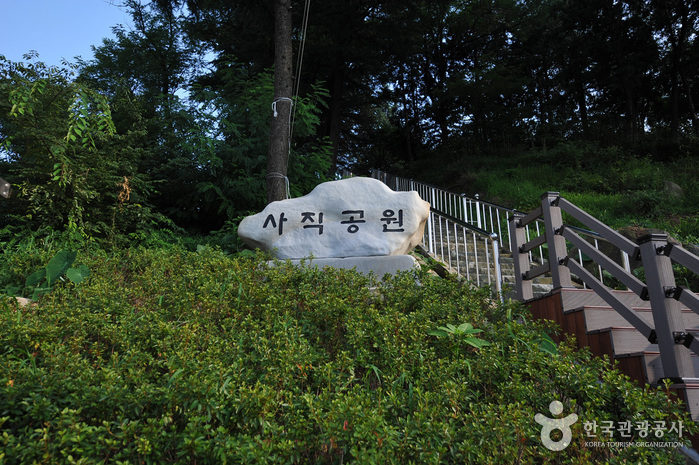
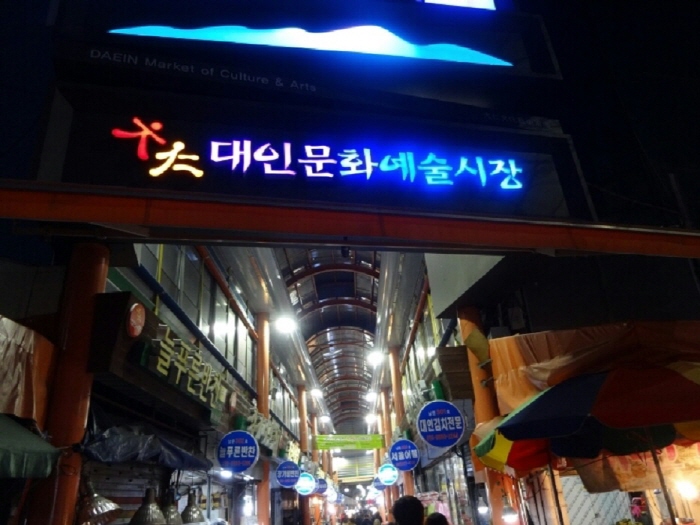
![Aritaum - Gwangju Jinwol Branch [Tax Refund Shop] (아리따움 광주진월점)](http://tong.visitkorea.or.kr/cms/resource/07/2886907_image2_1.jpg)
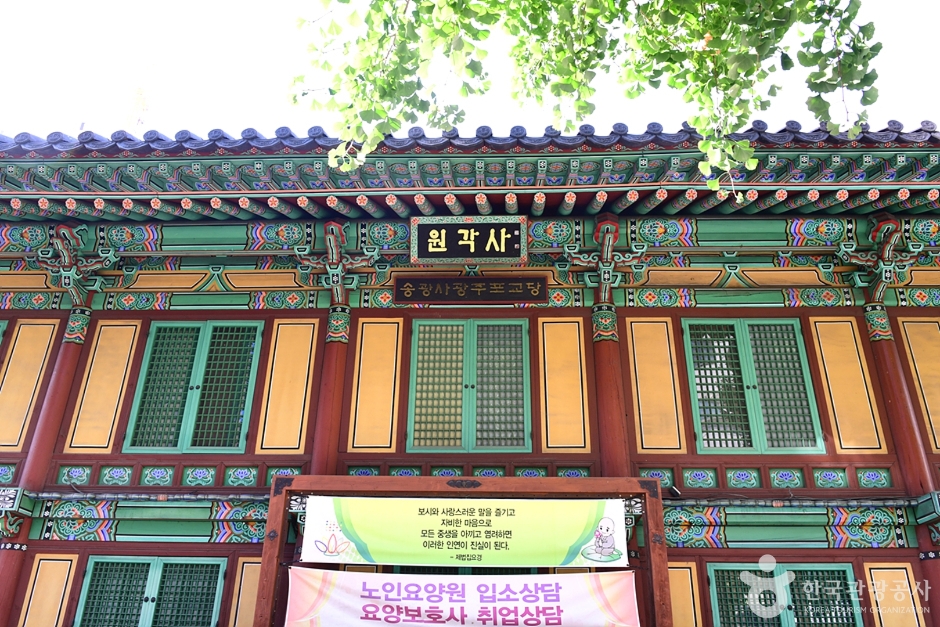
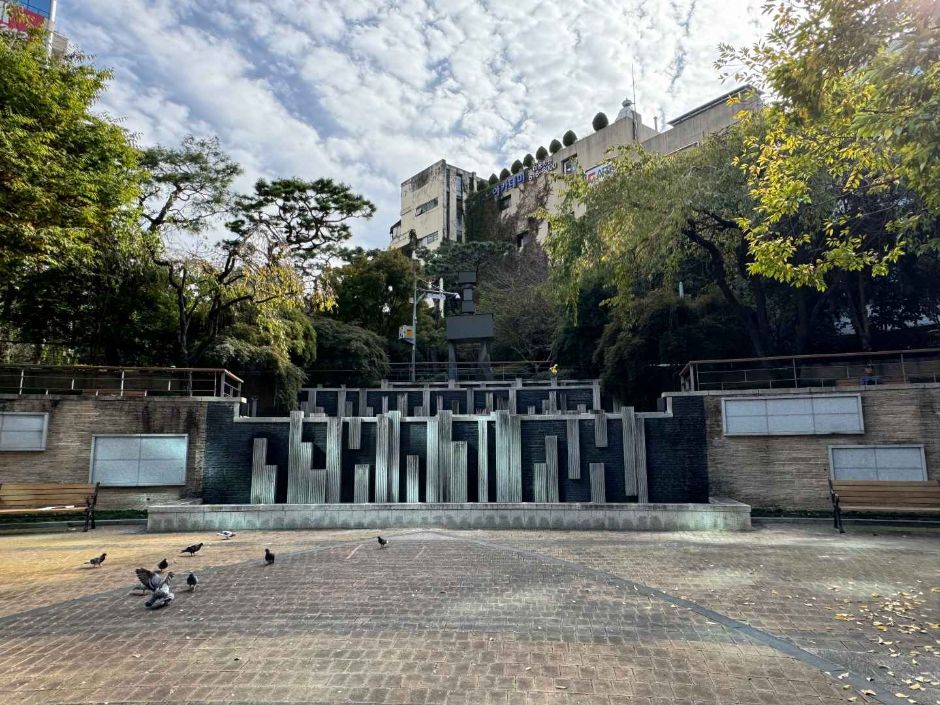
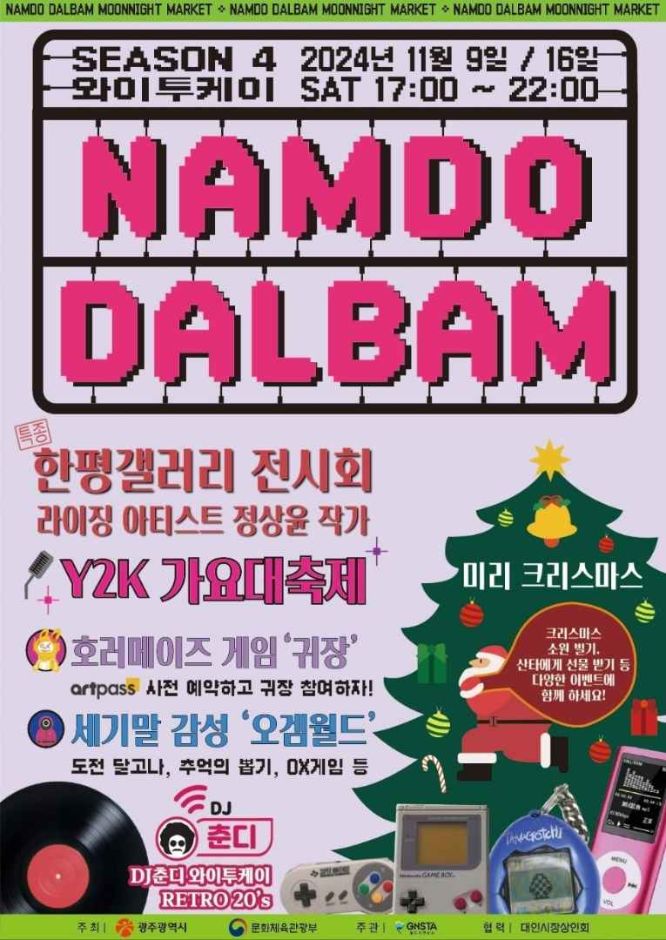
![S-Market - Gwangju Chungjang-ro Branch [Tax Refund Shop] (에스마켓 광주충장로)](http://tong.visitkorea.or.kr/cms/resource/68/2886868_image2_1.jpg)
 English
English
 한국어
한국어 日本語
日本語 中文(简体)
中文(简体) Deutsch
Deutsch Français
Français Español
Español Русский
Русский